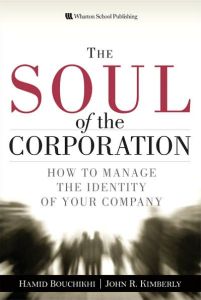Join getAbstract to access the summary!

Join getAbstract to access the summary!
Hamid Bouchikhi and John R. Kimberly
The Soul of the Corporation
How to Manage the Identity of Your Company
Wharton School Publishing, 2007
What's inside?
Like people, organizations have personalities that managers must understand, respect and nurture.
Recommendation
“Who am I?” In this angst-ridden age, no question cries out more insistently for an answer. If establishing identity is difficult for individuals, it is even tougher for commercial entities. Indeed, for many businesses, identity is a truly baffling issue. Executives, directors, employees, investors, customers and other stakeholders may have radically different notions regarding a company’s basic identity. Such corporate schizophrenia can lead to serious problems. Functioning as “corporate psychiatrists,” authors Hamid Bouchikhi and John R. Kimberly explain why few subjects are more timely or vital to commercial achievement. Companies that don’t define who and what they are are like headless chickens, dashing back and forth around the marketplace. They develop the wrong products. They target inappropriate customers. Their strategies make no sense. If you want to see the organizations in which you work or invest perform well, getAbstract advises you to read this thoughtful treatise.
Summary
About the Authors
Hamid Bouchikhi teaches entrepreneurship and management at ESSEC, a French business school. He is founder and academic director of an organization that assists entrepreneurs. John R. Kimberly is a professor at the Wharton School and also teaches at INSEAD in France.

















Comment on this summary